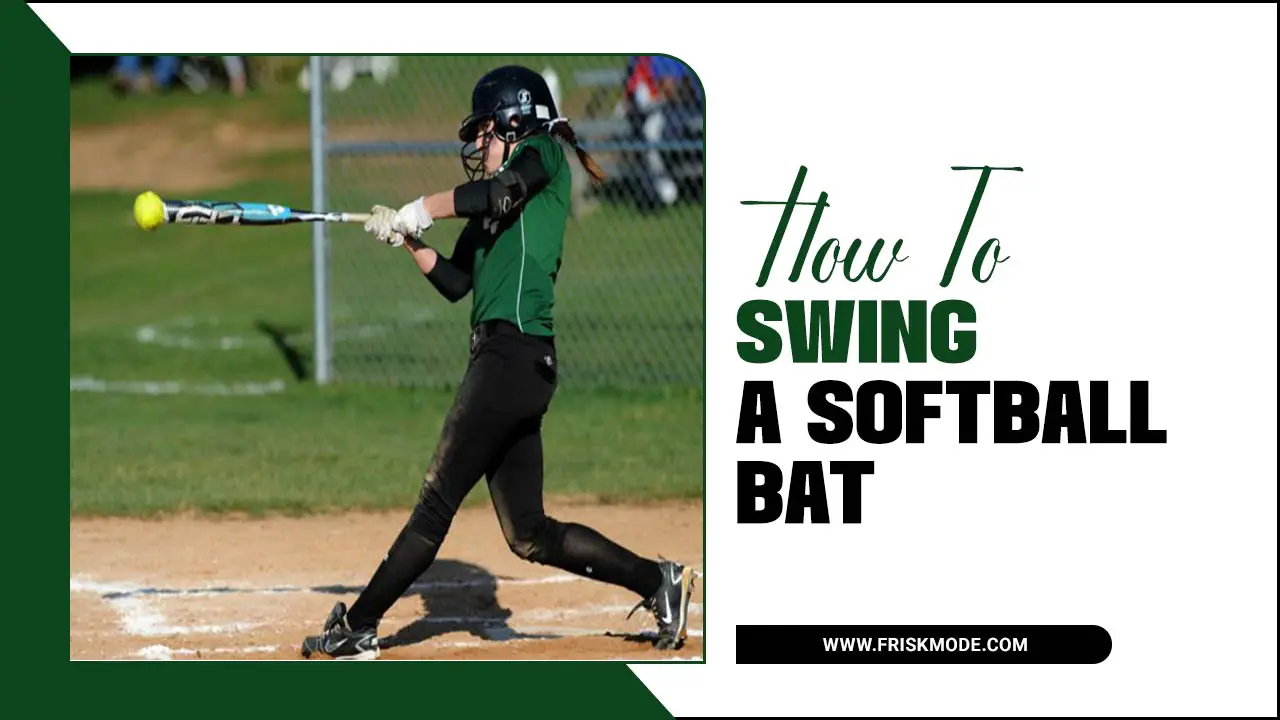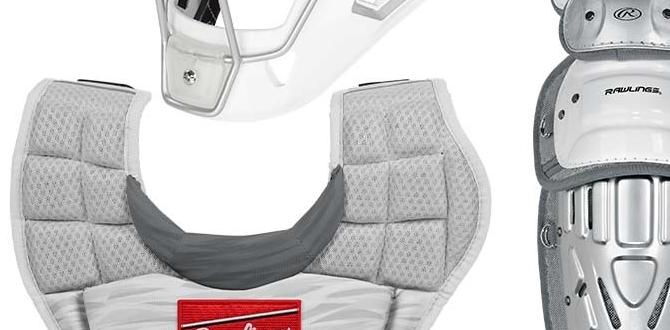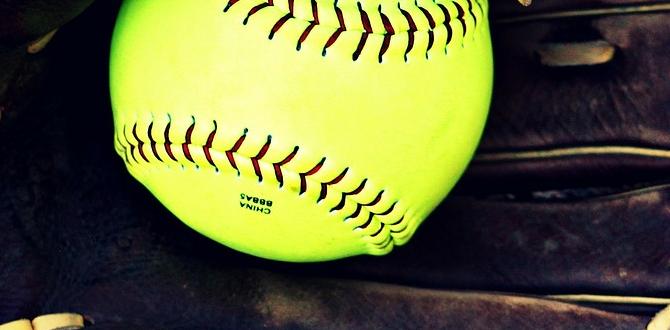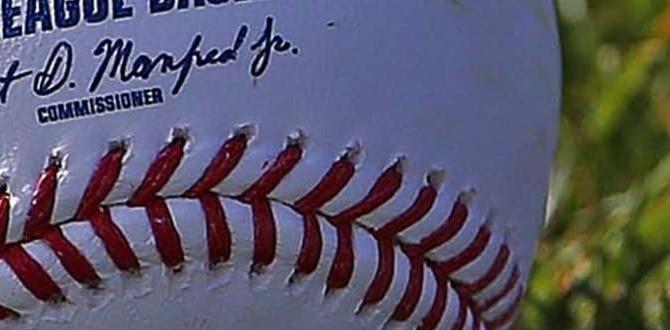Louisville Slugger Knee Savers are crucial for high school catchers, offering vital protection and comfort to prevent injury, improve performance, and extend the catcher’s playing career. This guide ensures you choose and use them correctly for maximum benefit.
Hey everyone, John P. Miller here from FriskMode! You know, as a catcher, you’re right in the thick of it – receiving pitches, blocking balls in the dirt, and making those lightning-fast tags. Your knees take a beating, and it’s super important to protect them. For high school catchers, that means having the right gear. Today, we’re diving deep into something that might seem small but makes a HUGE difference: Louisville Slugger catchers knee savers. These aren’t just accessories; they’re essential for keeping you in the game, feeling good, and performing your best, season after season. We’ll break down what they are, how they help, and what to look for, so you can make sure your knees are as ready as your arm!
Why Your Knees Matter: The Catcher’s Burden
Catching in baseball is one of the toughest positions on the field. Think about it: every pitch, you’re dropping into a squat. You’re going from that squat to block stray fastballs, often on hard ground. You’re absorbing the impact from every throw that lands in your mitt. Over time, this constant stress can lead to nagging pain, serious injuries, and even shorten a player’s career. It’s no joke. We see too many young players sidelined by knee issues that could have been prevented with proper protection.
The good news is that baseball equipment technology has come a long way. Louisville Slugger, a name synonymous with quality baseball gear, offers knee savers specifically designed to combat these very issues. They’re built to absorb shock, provide stability, and keep you comfortable, allowing you to focus on your game, not your aches and pains.
What Exactly Are Louisville Slugger Knee Savers?
At their core, Louisville Slugger catchers knee savers are protective pads that attach to the outside of your shin guards, just above the knee. They’re like an extra layer of defense, sitting strategically to absorb the impact when you drop into your catching stance or when you block pitches.
These aren’t just generic foam pieces. Louisville Slugger designs them with specific materials and shapes to:
- Absorb Shock: The primary function is to cushion the blow your knees take. When you’re catching, especially at higher velocities, or when blocking, those impacts can be significant.
- Provide Comfort: By distributing pressure and softening the contact with the ground, they make it much more comfortable to stay in your stance for longer periods.
- Enhance Stability: Some designs offer a bit of extra support that can help maintain good kneeling posture and reduce wobbling.
- Prevent Injury: This is the big one. By mitigating the force transmitted to your knee joint, they help prevent common catcher injuries like patellofemoral pain syndrome (runner’s knee), IT band syndrome, and even more serious cartilage damage.
Think of them as shock absorbers for your knees. They’re an extension of your shin guards, working together to provide a complete protective system for your lower body.
The Science of Saving Knees: How They Work
It’s not magic; it’s smart design and materials science! Louisville Slugger leverages advanced padding technologies. They typically use a combination of high-density foam and sometimes gel inserts. When you hit your knees, these materials compress and deform, spreading the impact force over a larger area and a longer duration. This reduces the peak force that your knee joint has to withstand.
According to research from institutions like The National Institutes of Health (NIH), knee injuries are common in sports requiring repetitive squatting and impact. While catching is often studied in terms of risk, direct impact absorption is a key factor in mitigating certain types of stress. Knee savers are a direct, though simple, intervention to address this risk directly.
The strategic placement of these savers is also crucial. They sit on the part of your shin guard that makes contact with your thigh when you’re in your catching crouch, and they’re positioned to protect the kneecap and surrounding soft tissues during blocks.
Choosing the Right Louisville Slugger Knee Savers
When you’re looking for Louisville Slugger catchers knee savers for high school, consider these factors:
- Compatibility: The most important thing is that they fit your existing shin guards. Most Louisville Slugger savers are designed to integrate with their own line of catcher’s gear, but it’s always wise to check the specifications. Some are universal, while others are model-specific.
- Material: Look for descriptions of padded materials. High-density foam is standard, but some models might incorporate gel or specialized impact-absorbing composites. The thicker the padding, generally, the more shock absorption.
- Attachment Method: Knee savers typically attach using straps or Velcro. Ensure the straps are durable and adjustable for a snug, secure fit. They shouldn’t slip down during play.
- Size: While many are one-size-fits-most, check if any sizing options are available. This is less common for knee savers than for gloves or helmets, but worth a quick look.
- Durability: These are going to take a beating. Read reviews or product descriptions to gauge how well they hold up over a full season.
Popular Louisville Slugger Knee Saver Features
Louisville Slugger often incorporates features designed to enhance comfort and protection. Some common ones include:
- Ergonomic Design: Shaped to contour comfortably around the knee.
- Ventilation: Some models might have small perforations to help with airflow, reducing sweat.
- Reinforced Straps: Stronger, more resilient straps that won’t tear or fray easily.
- Moisture-Wicking Linings: While less common on the outer savers, some internal padding might have these properties if they are integrated directly into the shin guard design.
Installing and Using Your Knee Savers
Putting on Louisville Slugger knee savers is usually pretty straightforward. Here’s a general guide:
- Inspect Your Shin Guards: Locate the area on your shin guards where the knee savers are intended to attach. This is typically the upper portion, designed to sit just above the main knee cup.
- Position the Savers: Place the knee saver pad against your shin guard. The curved side should ideally align with the curve of your knee.
- Secure the Straps: Thread the straps through the buckles or anchor points on your shin guards. Fasten them securely. You want them snug but not constricting. They should not move around easily once attached.
- Test the Fit: Put on your full catcher’s gear and get into your stance. Are the knee savers comfortable? Do they interfere with your mobility? Make any necessary adjustments to the strap tightness.
- Check During Play: After a few innings, you might want to re-check the tightness. Sweat and movement can sometimes cause straps to loosen.
Pro Tip: Always check your knee savers before each game and practice. A loose saver won’t offer proper protection and could even shift uncomfortably.
A Table of Common Materials Used in Knee Savers
Understanding the materials can help you appreciate the technology behind your gear. Here’s a look at what you might find:
| Material Type | Primary Benefit | Considerations |
|---|---|---|
| High-Density Foam | Excellent shock absorption, lightweight, cost-effective. | Can compress over time with heavy use, may absorb moisture if not treated. |
| Gel Inserts | Superior shock dispersion, can offer a softer feel, durable. | Can add a bit of weight, effectiveness can vary based on gel quality. |
| EVA (Ethylene-vinyl acetate) | Good cushioning and flexibility, durable, water-resistant. | Similar to dense foam, but often with a bit more resilience. |
| Composite Materials | Advanced impact resistance, often used in higher-end gear for maximum protection and energy management. | Can be more expensive, sometimes less flexible than foam. |
Beyond the Basics: Enhancing Catcher Knee Health
While Louisville Slugger knee savers are fantastic, they’re part of a larger picture for keeping your knees healthy. Here are other key areas to focus on:
1. Proper Catching Stance and Technique
This is foundational. A good stance distributes your weight effectively and puts less direct strain on your knees. Work with your coach on:
- The “Catcher’s Crouchâ€: It’s not about just squatting as low as possible. It’s about a stable, balanced position. Your feet should be shoulder-width apart, knees bent, and your weight balanced over the balls of your feet.
- Blocking Technique: Proper form for blocking means using your entire body to absorb the ball, not just jamming your knee into the ground. Keep your chest up, chin tucked, and use your glove and body to control the ball.
Focusing on these fundamentals will naturally reduce the stress on your knees, making the knee savers even more effective. For more on proper stances, resources from organizations like USA Baseball often provide excellent training materials.
2. Strength and Conditioning
Stronger muscles around the knee joint provide natural support. Focus on exercises that build:
- Quadriceps: Essential for knee extension and absorbing impact.
- Hamstrings: Help stabilize the knee joint.
- Glutes: Crucial for overall hip and leg stability.
- Core Strength: A strong core improves balance and power transfer throughout your body.
Simple exercises like squats, lunges, calf raises, and planks can make a significant difference. Always ensure you’re using proper form to avoid creating new injuries.
3. Flexibility and Mobility
Tight muscles can put extra strain on your joints. Incorporate regular stretching, especially for your hamstrings, quads, and hip flexors. Dynamic stretching before practice and static stretching after can improve range of motion and reduce muscle soreness.
4. Nutrition and Hydration
This might seem less direct, but it’s vital for tissue repair and overall health. Staying hydrated ensures your joints are lubricated, and a balanced diet provides the nutrients your body needs to repair itself after strenuous activity.
5. Listening to Your Body
This is perhaps the most important advice. If you feel persistent pain, don’t ignore it. Pushing through significant knee pain can turn a minor issue into a major one. Don’t be afraid to sit out a practice or communicate with your coach or parents if something doesn’t feel right. Seeking advice from a healthcare professional, like a sports medicine doctor or physical therapist, is always a wise move if pain continues.
Louisville Slugger Catcher’s Gear: A System Approach
Your Louisville Slugger knee savers are part of a larger system of catcher’s gear. For high school play, ensuring all your protective equipment is up to par is essential. This includes:
- Catcher’s Helmet/Mask: Protects your head and face.
- Chest Protector: Guards your torso from foul tips and impacts.
- Shin Guards: The base protection that your knee savers attach to.
- Catcher’s Mitt: Designed for durability and shock absorption.
Louisville Slugger offers a range of products within each category. When possible, using equipment from the same brand can sometimes ensure better integration and fit. For instance, their Series 5 catchers gear and other lines are often designed with components that work harmoniously.
A Quick Look at Catcher’s Gear Components
| Gear Component | Primary Protective Function | Key Features for High School Catchers |
|---|---|---|
| Helmet/Mask | Head, face, and throat protection. | Secure fit, good visibility, proper padding, meets safety standards (e.g., NOCSAE). |
| Chest Protector | Torso, collarbone, and throat protection. | Good coverage, flexible for mobility, impact-absorbing materials, adjustable straps. |
| Shin Guards | Knees, shins, and lower legs. | Full leg coverage, articulated knee protection, secure strapping, durable construction. |
| Knee Savers (Accessory) | Added knee impact absorption and comfort. | Durable padding, secure attachment, designed for high school catcher’s stance. |
| Catcher’s Mitt | Impact absorption when catching, finger and wrist protection. | Proper sizing, good pocket depth, durable leather, comfortable lining. |
Frequently Asked Questions about Louisville Slugger Knee Savers
Q1: Are Louisville Slugger knee savers necessary for high school catchers?
A: Yes, they are highly recommended. While not mandatory by all leagues, they provide crucial impact absorption and comfort, helping to prevent common knee injuries that can sideline a player. They are a vital piece of equipment for any serious catcher.
Q2: Will knee savers affect my ability to move or block?
A: No, if fitted correctly, they should enhance your ability to block and move comfortably. They are designed to absorb impact, not restrict motion. Ensure they are snug and don’t shift, and that they don’t interfere with the primary padding of your shin guards.
Q3: How do I know if my knee savers are attached correctly?
A: They should be securely fastened to the upper portion of your shin guards, just above the knee cup. They shouldn’t slide down your leg when you’re in a squat or moving. Test them by getting into your catching stance and making some blocking motions.
Q4: How long do Louisville Slugger knee savers typically last?
A: Durability can vary based on usage and the specific model. With regular use in a full season, they might show wear after one or two seasons. Inspect them regularly for tears in the padding or straps, and replace them if they become compressed or damaged.
Q5: Can I use knee savers from other brands with my Louisville Slugger shin guards?
A: It’s often possible, but not always ideal. Louisville Slugger knee savers are designed to work best with their own shin guard models. However, many knee savers use standard strap systems. Always check compatibility and try them on to ensure a secure and comfortable fit before committing.
Q6: What’s the difference between knee savers and knee pads?
A: Knee savers are typically accessory pads that attach to shin guards to offer extra impact absorption directly above the knee. Standard knee pads might refer to the built-in padding within shin guards themselves, or separate sports pads worn for different activities. For catchers, specific “knee savers” designed for shin guard integration are key.
Q7: Where can I find official information or support for my Louisville Slugger gear?
A: The best place to find official information, product details, and customer support is on the official Louisville Slugger website. You can often find product manuals, warranty information, and contact details there. Many reputable baseball equipment retailers also carry detailed specs.
Conclusion: Invest in Your Knees, Invest in Your Game
As a high school catcher, your knees are your foundation. The repetitive stress and high-impact nature of the position demand that you take proactive steps to protect them. Louisville Slugger catchers knee savers are a straightforward, effective, and affordable way to add a critical layer of defense against discomfort and injury. They work hand-in-hand with proper technique, conditioning, and the rest of your protective gear to ensure you can play at your best, longer.
Don’t wait for pain to become a problem. Equip yourself with the right tools, like Louisville Slugger knee savers, and commit to smart training practices. By prioritizing the health and longevity of your knees, you’re not just protecting yourself; you’re investing in your performance and your future on the baseball diamond. So, gear up, stay safe, and keep making those great plays!





